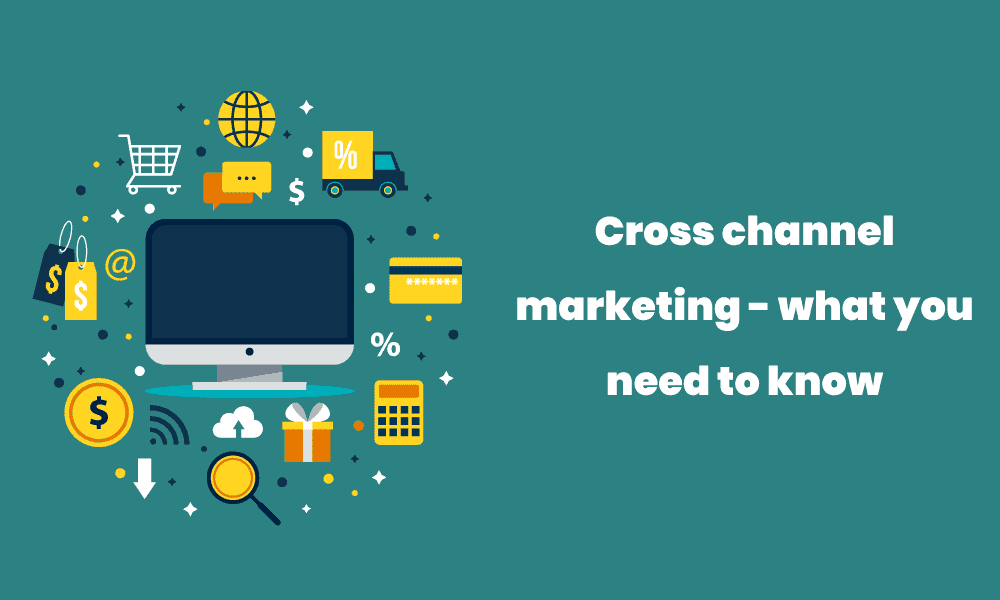Freelance digital marketing is highly competitive. You can create amazing content, run ads, and post on social media, but if your marketing efforts are not connected, you might not get the results you want. Many freelancers struggle because they focus on one platform at a time, leaving potential clients untouched on other channels.
Cross-channel marketing integration solves this problem. It ensures that your marketing works together across multiple platforms, increasing your brand visibility and engagement. Instead of hoping that one platform will bring in all your clients, you create a seamless experience for your audience across various channels. If you are a digital marketing freelancer in Mumbai and looking to grow your business, you cannot afford to ignore this strategy.
What is Cross-Channel Marketing Integration?
Cross-channel marketing integration means using multiple marketing channels in a connected way. Instead of treating social media, email, blogs, and ads separately, they work together to create a smooth experience for your audience.
For example, imagine a client sees your Instagram post about SEO tips. They click a link to read a full article on your website. After a few days, they receive an email with more tips and an offer for a free consultation. This kind of seamless marketing increases engagement and makes people more likely to trust your services.
Why Freelancers Need Cross-Channel Marketing
More Visibility Across Platforms
Many potential clients don’t use just one platform. Some prefer LinkedIn, while others spend more time on Instagram, YouTube, or Twitter. Cross-channel marketing helps you appear where your audience is active, increasing your chances of being noticed.
Better Client Engagement
If someone sees your brand on multiple platforms, they will remember you better. Instead of a one-time interaction, they will see your content in different places, making them more likely to engage and trust your expertise.
Higher Conversion Rates
A single marketing platform may not be enough to convert a client. However, if they see your content on different channels, they are more likely to take action. Someone might see your ad, then read a blog, and later sign up for your newsletter before hiring you.
Consistent Branding and Messaging
Freelancers need a strong brand. If your social media posts, emails, and website send different messages, potential clients may get confused. Cross-channel marketing ensures consistency, making your brand more professional and trustworthy.
Cost-Effective Marketing
Instead of spending all your budget on one platform, cross-channel marketing allows you to optimize spending. If one channel is not performing well, you can shift your focus to others while still keeping your audience engaged.
How to Implement Cross-Channel Marketing Integration
Understand Your Audience
Before you start using multiple platforms, you need to understand where your potential clients are active. Research your target audience’s preferences, behavior, and pain points.

Select the Right Channels
Not all platforms will work for you. Choose the best ones based on your niche and target audience. Here’s a simple guide:
| Platform | Best For |
|---|---|
| B2B marketing, networking, lead generation | |
| Visual content, brand awareness, engagement | |
| YouTube | Educational content, tutorials, branding |
| Community building, ads, local marketing | |
| Industry news, discussions, thought leadership | |
| Nurturing leads, customer retention |
Once you identify your key platforms, focus on integrating them for better results.
Create a Content Strategy That Works Across Platforms
Your content should be repurposed for different channels while keeping the core message the same. Here’s how:
- A blog post on your website can become an Instagram carousel and a LinkedIn article.
- A video on YouTube can be shortened into an Instagram Reel or Facebook Story.
- A Tweet with key insights can be expanded into a newsletter topic.
By repurposing content, you save time while maintaining a strong presence across multiple platforms.
Connect Your Platforms for a Smooth Customer Journey
Your audience should move easily between platforms without confusion. Here’s how:
- Add links to your social media profiles in your email signature.
- Include a website link in all your social media bios.
- Encourage your blog readers to follow you on social media for more updates.
- Use email marketing to bring people back to your website.
This way, your audience can engage with your brand wherever they prefer.
Use Automation Tools to Save Time
Managing multiple platforms can be time-consuming. Use automation tools to streamline your efforts:
- Hootsuite or Buffer for scheduling social media posts.
- Mailchimp or ConvertKit for email marketing automation.
- Google Analytics to track website traffic from different channels.
- Zapier to connect different marketing tools and automate tasks.
These tools help you maintain consistency without spending all your time on marketing.
Track Performance and Make Adjustments
Cross-channel marketing is not just about posting on different platforms. You need to track what’s working and make improvements.
Key metrics to track include:
- Website Traffic – Which platform brings the most visitors?
- Engagement Rate – Are people interacting with your posts?
- Email Open Rate – Are your emails reaching the right audience?
- Conversion Rate – Which channel leads to the most client inquiries?
Analyzing these numbers helps you refine your strategy and focus on what works best.
Common Mistakes to Avoid in Cross-Channel Marketing
Ignoring Platform Differences
Each platform has a unique audience and content style. Don’t post the same thing everywhere without adjusting it for the platform’s audience.
Not Having a Clear Call-to-Action (CTA)
Your audience needs guidance on what to do next. Whether it’s following your page, signing up for a newsletter, or booking a consultation, make sure your CTA is clear.
Overloading with Promotions
If all your content is about selling, people will lose interest. Mix promotional posts with valuable and engaging content to keep your audience interested.
Not Tracking Performance
If you don’t measure results, you won’t know what’s working. Regularly review analytics and adjust your strategy accordingly.
Final Thoughts: Cross-Channel Marketing is the Future for Freelancers
Freelancers who rely on a single marketing platform risk missing out on potential clients. Cross-channel marketing integration allows you to reach more people, engage your audience better, and increase your chances of getting hired.
You can build a strong personal brand and grow your freelance digital marketing business by choosing the right platforms, repurposing content, automating tasks, and tracking performance.
If you want to stand out in the crowded digital marketing world, don’t limit yourself to just one platform. Start integrating your marketing efforts today and watch your freelance career grow!
Click Here to Read More Articles












Comments (0)